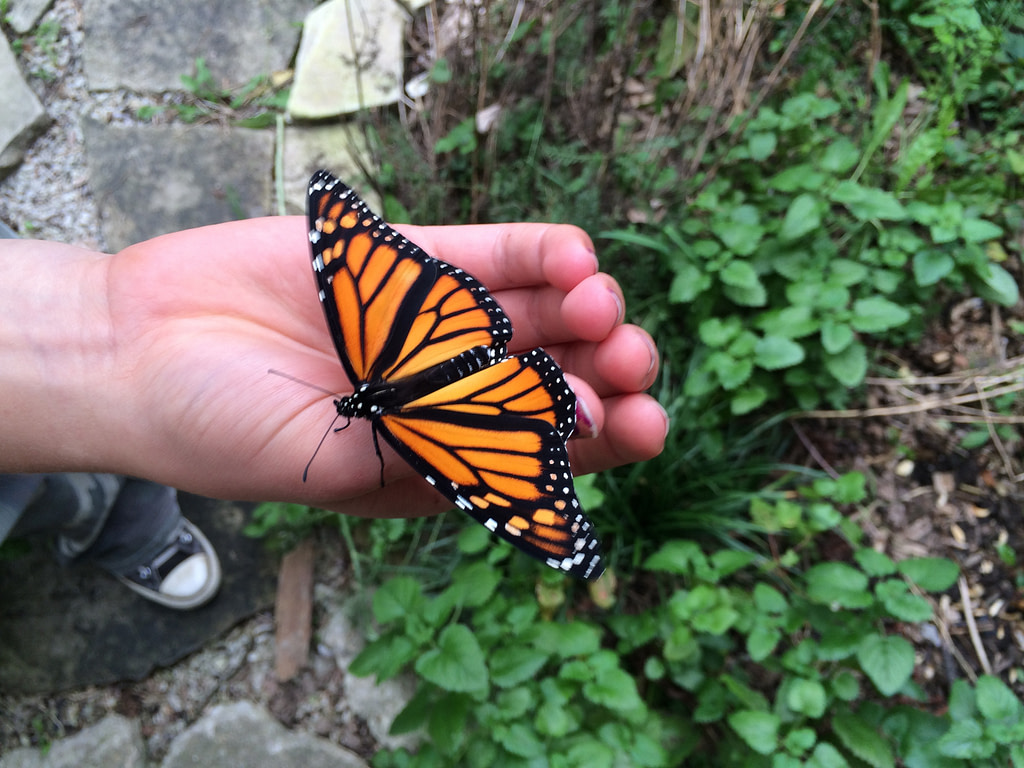This post appeared originally in Permaculture Design magazine, issue #112 as "Mistakes We Make."
Everything and everyone is my teacher. This was made explicit in my Standard Class at the Tracker School, though I had been using it implicitly for much of my life. I’ve learned from others mistakes, but I’ve learned the most from my own errors. And I’ve made more mistakes than I can recount. You probably could say the same. What mistakes have you learned the most from?
What is a mistake?
A mistake is an action or judgement which is misguided or wrong. Our mainstream culture and the constant attacks and criticisms on social media can make us cautious about claiming something is wrong—or it can encourage us to make a claim about something being misguided or wrong without really offering our reasoning and actively thinking about the matter.
Call me odd, but as a mid-Westerner, I wonder about the erosion of common sense. When Thomas Payne wrote “Common Sense” he was creating a common vision or understanding of what should be considered normal and right.
When I look at the synonyms for “mistake,” I see that many of them are based on feedback. Ahh! There we go with systems thinking. In our permaculture understanding, we might begin to actively welcome feedback and sharing our learning with others. I imagine this is how many of our smaller communities mentor each other into creating a common-sense approach to making a living in the past.
Errors, miscalculations, and omissions
When we make an error, we do not get the results we were looking for. A miscalculation will mean lower yields or no yields in the garden. Too little fertility in the soil and the harvest is poor. Too much water for too long, and the perennials will drown. If we choose the wrong species in our forest garden, disease or drought or flood or temperatures can lay waste to our investment.
I miscalculated how quickly ground cover would re-grow after I pastured my chickens in our 1/8 acre of back yard. The ground was heavily shaded by a 55-year-old silver maple. I moved the chickens and relatively bare ground was seeded (I thought). It would regrow. Nature is abundant, right? It turns out that it not really true. There is a limiting factor in terms of light and growing time (the chickens were particularly damaging in the early spring, late fall, and over winter). My four hens needed more land to cover, and the land needed more light to foster re-growth.
If I were to bring poultry into the space now, I would do two things: 1) limb up the silver maple, and 2) work with quail instead of chickens. It turns out the quail are showing up without my introducing them. I just need to find their nest. I learned there are limits in any situation, and I could have had less damage to my system if I had taken action on the feedback sooner.
One very common mistake I warn my design students about is spacing. We are very optimistic about how many plants we can fit in our landscapes. I made this mistake, and I was gratified to hear Toby Hemenway admit to the same experience years ago in an online forum. Paula Westmoreland, of Ecological Design in Minnesota shared some of her experience for this article:
“One of the mistakes I made early on in broad-acre design was making an alley width too narrow in an alley cropping system. Space was limited in one of the fields I was designing and I was trying to stack as many crops as I could into the field so I designed 15’ wide alleys for the hazelnuts and elderberries. This worked fine in the early years when the shrubs were small. The alleys could be mowed, animal tractors moved through them, or they could be planted with another crop. But as they matured the alley became unusable space. It was too narrow to easily move equipment through and not enough sunlight to harvest another productive crop. The lesson that hit home to me was I needed to do my due diligence and design what the system would look like and how it would be managed through the full lifecycle of each of the anticipated crops.”
Some of systems may give feedback over very long timeframes. My 65 year old home has a basement that was dug by hand AFTER the house was built. In 65 years, it had never flooded until February of this year. Oops. Because of that, there had never been a sump pump installed. Now, we are faced with removing all of the flooring and drywall to install a perimeter drain, a sump pump, and sealing the walls.
Building mistakes can be very expensive. I know of a permaculture person who built a very large building with the first floor laid in cement block. There was a subtle (2”) curve in one of the walls when the block was laid. This meant that each truss for the second floor had to be custom measured and built for the exact position. Tedious.
A design client of mine brought me into work with them after their house was under construction. It turns out their dream home is built 10’ below a seep. There is no way to channel the water in a different direction due to the building choices they made. They live with a sump pump running constantly—actually they have a timer to turn it off at night so they can sleep. That is a Type 1 error—something that will exist as long as people live in that structure on that site. These are all examples of miscalculations. Sometimes however, a mistake is made due to a misunderstanding.
When we feel competent to begin our work with design clients, we make a lot of mistakes. Since we’re working with someone else’s dollars, time, and property, mistakes can be really scary. Understanding our clients is really important. One of my early clients was a couple on the verge of retirement. I laid out a design, but I didn’t do a thorough analysis on elevation (as we all agreed based on observation what was needed). It turns out we were off. The placement of the plants in the design didn’t change (because the relation to the sun was the same), but the direction of the beds to run across contour did. It was a minor mistake, but a very obvious one. I learned to always do a thorough analysis—which became easier with the publication of GIS sites with better data over the next year.
This same client also taught me about timelines. Most clients want and need a long timeline for implementation, but these were able to implement the design I thought would take them three years within the first year of their retirement. Good health, means, commitment, and skills served them well. Listening to the client helps us match up goals and capacity. Jude Hobbs of Cascadia Permaculture shared this story:
“One of the very earliest lessons I learned when I started my Landscape Design Business was not listening deeply to a client. I worked with a retired couple who were so excited about doing a whole systems design for their property…they wanted to include most everything I enjoyed bringing to a design. They loved the idea of edibles for humans and wildlife, water features, area for composting by the garden, aromatic plants, fall color, minimal lawn….you get the idea. We worked together on the design and they were thrilled with the result. About 6 months later I called them to see how the installation went—they said; “We loved your design but realized a lot of it would not work for us, come by and see what we have done.” To say the least, I was surprised when I arrived and saw lots of lawn and concrete where a multitude of plants were to have been. When asked what happened..they said they realized they were going to be traveling a lot and also did not want to spend the amount of time it would take to maintain the gardens. Since then I always utilize a questionnaire which includes the crucial question..how much time do you have to maintain your landscape?
As you can tell, 35 years later I remember the incident well and am mindful in the awareness of deep listening. Also, it’s not about pleasing the designer but focusing on clients’ needs and realistic goals.”
Misguided, misunderstood, misinterpreted
When we began our forest garden, I was determined not to prune our apples and plums. I was influenced by my reading of Masanobu Fukuoka’s non-interference principle. This fit with the STUN method I’d heard of from Mark Shepard—Sheer Total Utter Neglect. That seemed to fit with the lifestyle of a 30-year-old mother and organizer who was taking up a permaculture teaching and design lifestyle while also trying to homeschool and implement some significant home economic projects.
One apple grew tremendously each spring for three years—reaching 15’ very quickly. I was so very excited about 16 ounce apples, until a windstorm knocked it over. I realized the roots had not been growing at the same rate as the rest of the tree. Likewise, the plums were thick with foliage and covered with blossoms—but by not pruning—there was insufficient air flow. Black knot, a common fungus, took hold, and I ended up losing both plum trees.
Gaffe, faux pas, misconception
When it comes to society and cultures, there are many, many mistakes to learn from. Some of them are mine. Some of them are not. I’ve judged the book by its cover—I’ve made assumptions about people based on their age, skin tone, dress. I’ve been the book judged by its cover—people have considered my light skin tone, midwestern mien, and education an indication of a very particular (and misconceived) background. I try very hard to not be limited by this kind of thinking and to connect more deeply with people I encounter.
On a different level, I’ve invested years of my life and time I didn’t have into projects which did not provide the yields I was looking for when I invested initially. About five years ago, there was a complete board changeover with a 25 year old sustainability nonprofit in my community. I proposed to them that I put in the organizing effort to convert it to a local permaculture institute—and they agreed. However, new board members elected at the time of my proposal and working closely with established projects didn’t fully buy in to the new vision. After three years of service on the non-profit board, I refocused on the regional permaculture institute, Great Rivers and Lakes Permaculture Institute. It was taking too much effort to try to re-pattern the local project.
Mistakes come in varying degrees
Some mistakes are not very costly—in terms of time, materials, and energy. Some mistakes cost dearly. I’ve got an experiment going in my kitchen now with kombucha. For the cost of counter space for a week, a bag of sugar, a few tea bags, the energy to boil the sugar water, and the kindness of a friend, we will see how it goes. I hope it’s not a mistake, but it’s not very costly to me either way.
The client with the home built below the seep has a very costly mistake to pay for if the trends toward more severe rain events continue in our area. Someone else I know continued to build out their design without permits. This resulted in a lawsuit and ultimately the sale of the property. In the process, a slew of relationships were upended. That was very costly, indeed.
We might consider the failure of people to participate in legislative process and the utter failure of policy to make meaningful change in our society as a mistake of epic proportions. Likewise, the failure to address social unrest and cultural bias—while overwhelming—is something we all have to live with. Because we all have to live with these mistakes, it is important that we engage with them collectively.
Mistakes are an opportunity for iterative design
When the apple and plum trees came down, I had the opportunity to plant peach and sour cherry trees that suit my region better. I knew that because it took a few years of the permaculture community—and some permaculture nurseries in particular—to experiment and find out. It turns out pie is one of my favorite desserts, so why not peaches and cherries?
I worked with a client recently who wanted everything written in experiment form. All of the plantings would be trials. I believe this is very clever. He will be inclined to observe and track the performance of his investment. Further, he already knows there will be feedback in the form of failures. By tracking the implementation closely, he can determine the source of the mistake. That learning can be valuable for our region.
What if there are no mistakes?
Recovering from a mistake can help us to transform experience into wisdom. At a point in our lives, we want to support those who are learning the skills we’ve mastered so that they do not make the same mistakes we did. That mentoring is one of the beautiful things about community and extended family or tribe. The re-skilling of Transition Towns, the farm schools and sewing courses and gardening time with the neighbor down the street are all ways to re-establish the common sense of an adaptive future.
While mistakes can be costly, they can also provide us with resource and opportunity that we couldn’t imagine without going down that path. We have a choice about how we approach design and implementation. We can not do anything—a very safe way to control the situation. We can do something and succeed. We can do something, fail and learn from it.
When we consider the incredible pressures and failures as our culture and ecosystems run up against limiting factors, there’s no time NOT to be making mistakes.

![Flooding in Australia [Detail]](https://mlxfher5k4qv.i.optimole.com/cb:ykJ5~5f699/w:499/h:333/q:90/f:best/ig:avif/https://www.shelteringhills.net/wp-content/uploads/2023/03/5348891247_a0885c4107.jpg)

